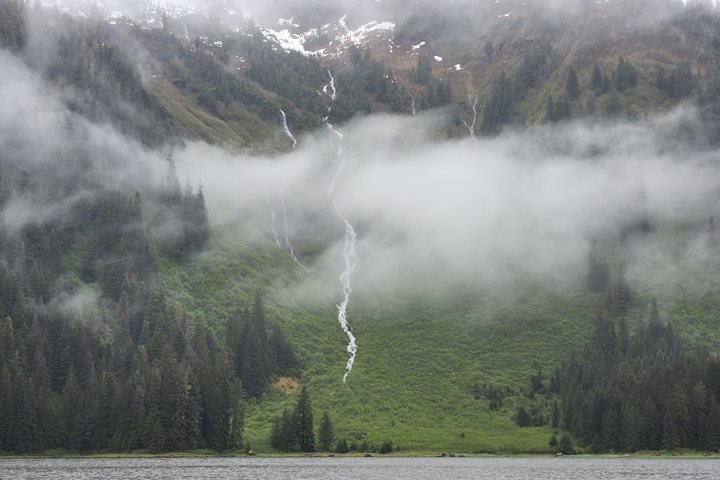The unceasing delights of Southeast Alaska’s wilderness and wildlife continue to unfold around us every hour of every day. This morning, our hardworking crew festooned the shore with yellow and red kayaks and paddleboards, and we explored this stunning piece of old growth forest by land and sea. In the cascade below Lake Eva, the first group of hikers surprised a mother bear and her cub feeding on spawning salmon. Deeper into the forest, delectable bright yellow-orange chicken of the woods fungi spiraled up the trunks of decaying Sitka spruce trees. Spikes of coral root, a rose-colored orchid, and bright red bunchberries decorated the mosses on the sides of the trail. Kayakers paddled into the bay, a tide dependent estuary where harbor seals and bald eagles were in residence, hoping to catch (or steal) a meal of fresh salmon.
Lake Eva’s stream system supports four of the five species of Pacific salmon: sockeye, coho, chum, and pink all lay their eggs in the gravels of the lake and stream. Dolly varden are here too, to snatch and eat a few of those protein-rich salmon eggs. The coastal brown bears, the fishermen and women, the hikers and paddlers all share the bounty that the annual run of Pacific salmon brings to everything around them, including feeding the stream side trees with nitrogen from salmon carcasses brought ashore and partially consumed by the bears.
The holy grail of cruising in Southeast Alaska’s coastal wilderness has to be the bubble-net feeding behavior of humpback whales. Just after lunch we encountered a large group of these magnificent animals working close to shore to corral herring Pacific into a tight school. One animal blows a spiral of underwater bubbles that rise to form a net, as other team members flash their long pectoral flippers to further concentrate the prey. Watching eleven open whale mouths surface at the same time is simply stunning. We are so fortunate to enjoy such an amazing behavior and altogether, a nearly unbelievable day.







